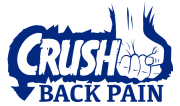Facet joint arthritis is osteoarthritis that affects the facet joints of the spine. Osteoarthritis is common and often affects the knees, hips, and hands. Osteoarthritis involves inflammation of the articular cartilage inside the joint. Over time the articular cartilage becomes less hydrated and thinner. The inflammation and changes in articular cartilage can result in pain, though facet joint arthritis is not always painful.
Lower back stiffness and soreness in the morning, after first getting up is a common symptom of facet joint arthritis. Sitting and flexing the spine usually feel better compared to standing and extending the spine. After the first hour or so of being up of pain and stiffness decrease and are not as noticeable.
Exercises designed to stabilize and support the lumbar spine effectively decrease lower back pain related to facet joint arthritis. Adequate trunk strength and neuromuscular control minimize forces through the facet joints. The articular cartilage also requires compression and decompression to obtain nutrients and get rid of waste. The necessary compression and decompression of the articular cartilage is only achieved with movement and exercise.
FAQ
The facet joints are the joints in your spine. Facet joint arthritis is simply arthritis of the spinal joints. It’s no different than arthritis of the knee or hip joint. Arthritis is inflammation of the articular cartilage within a joint. This results in pain and stiffness.
With an x-ray.
Anti-inflammatory foods, medication, movement/exercise, and time.
Inflammation of the articular cartilage. Genetics, age, activity level, and diet all play a role. There is not one factor that causes facet joint arthritis. Multiple factors and aging work together to cause arthritis over time.


